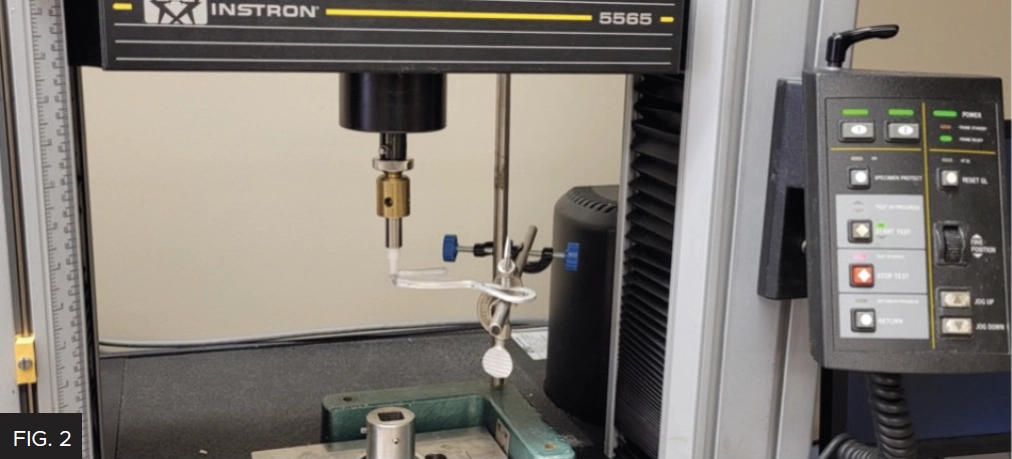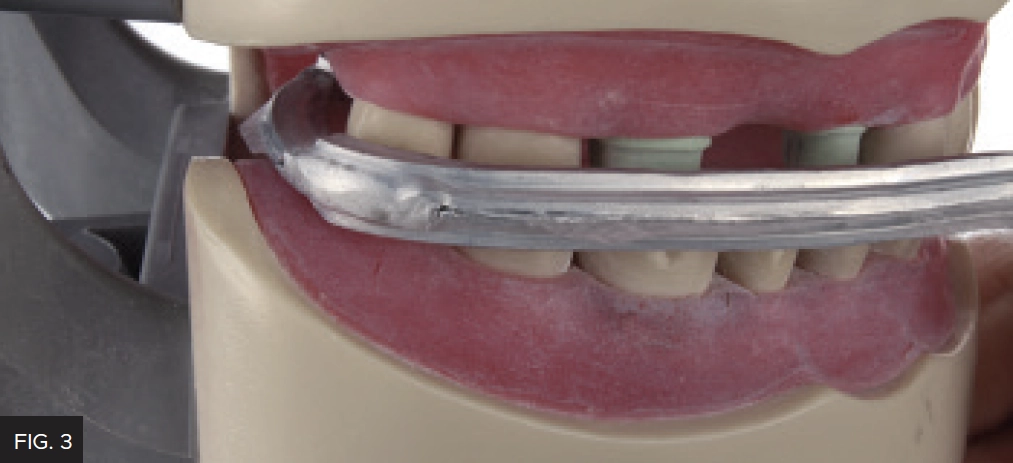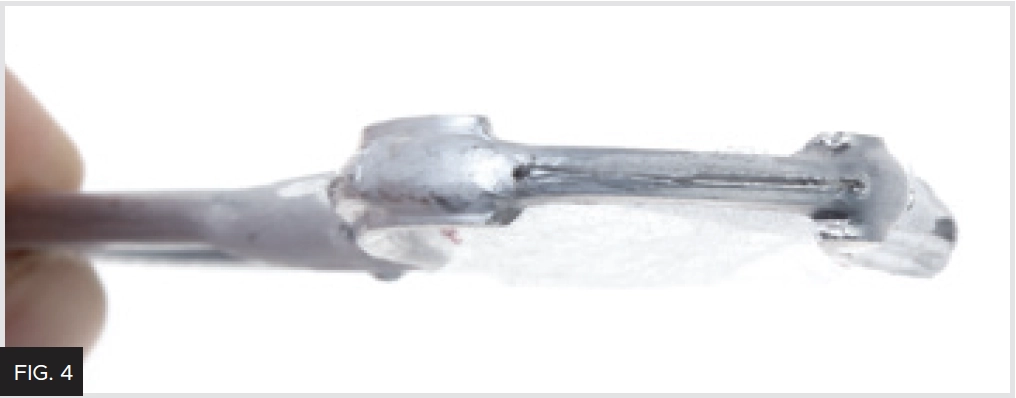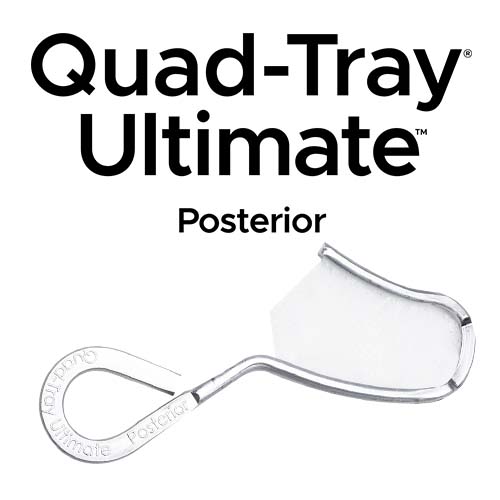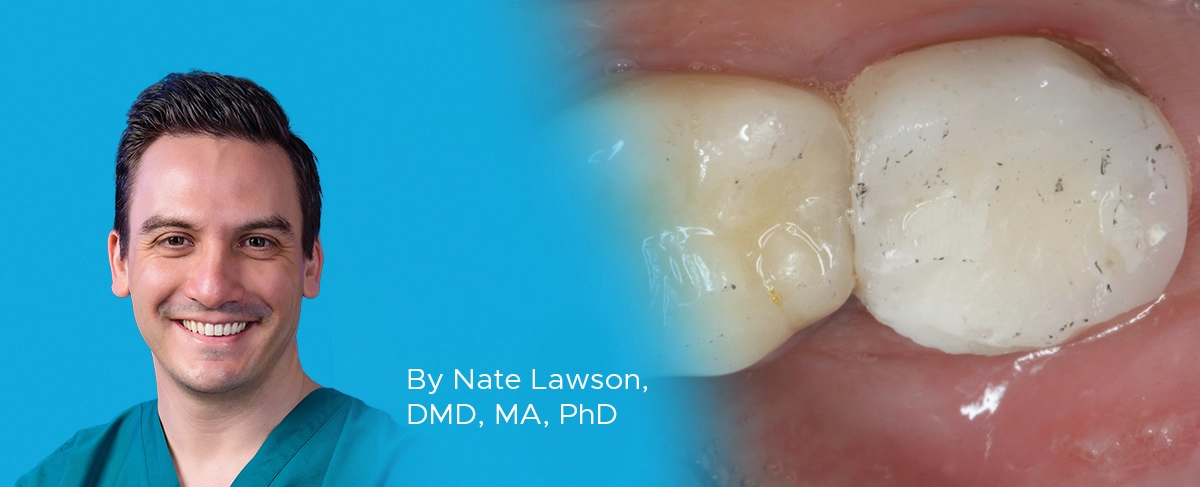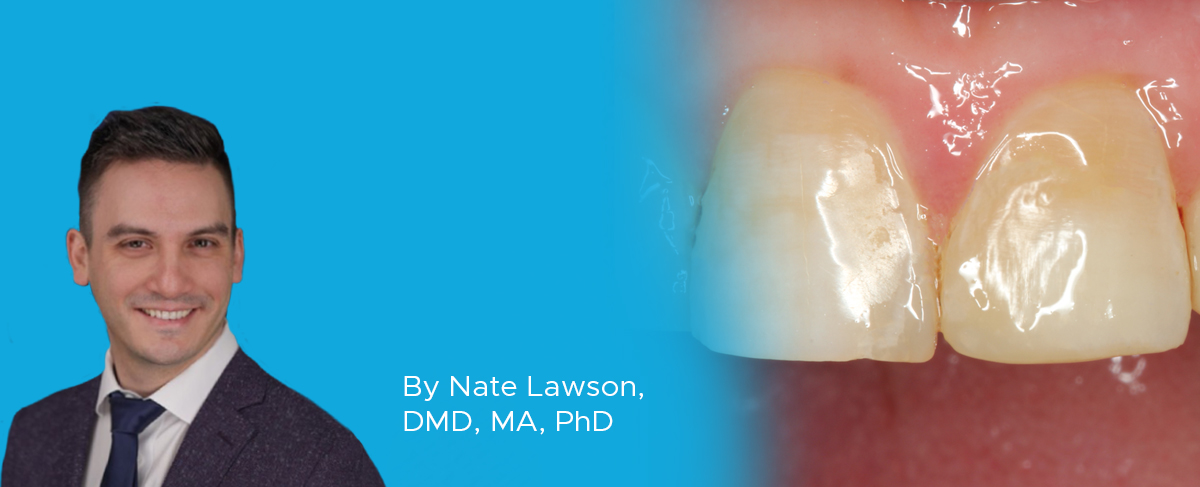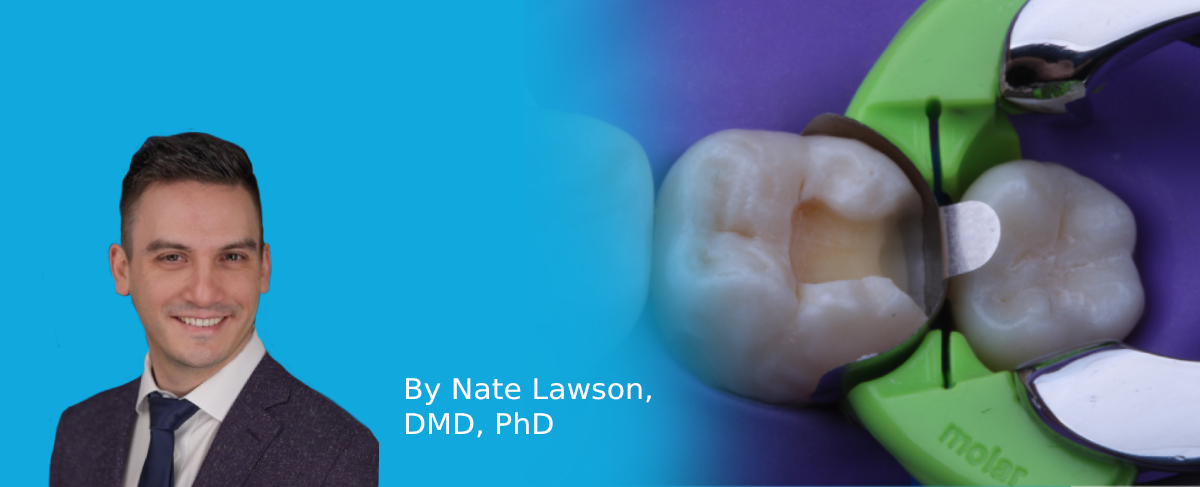
Ask the Expert: An Interview with Nate Lawson, DMD, MA, PhD
on Dual-Arch Impression Trays
Question
How commonly used are dual-arch trays and what are their advantages?
Answer
Question
What are the requirements of using dual-arch tray?
Answer
To utilize a dual-arch tray, the impression should capture the canine of the same side as the prepared teeth to factor canine guidance into the occlusal design of the restorations. Additionally, teeth mesial and distal to the prepared tooth should be present and captured as these teeth help to create occlusal stability between the maxillary and mandibular casts during mounting. Finally, an opposing tooth should be present as the occlusal stops from the adjacent teeth can help prevent flexure of the impression in a non-rigid dual-arch tray.
Surveys of dental laboratories reveal that many dual-arch impressions are in violation of these requirements. In a 2009 survey, only 55.7% of dual-arch impression recorded a single unit bounded by intact teeth that was opposing an intact tooth.4 In a 2013 survey, 26% of dual-arch impressions did not record an unprepared tooth anterior and posterior to the preparation, 14% did not register canine teeth, and 9% were not made in maximum intercuspation.5 A Practice Based Research Network study determined that there was no difference found in the clinical acceptability of crowns produced with dual-arch trays with or without either mesial or distal contacts missing; however, crowns fabricated under these conditions were less likely to achieve an excellent occlusion assessment (66.2% with both contacts and 57.8% without).1
Question
Are there any disadvantages of using a dual-arch tray?
Answer
Question
What are the advantages of using the Quad-Tray Ultimate Posterior dual-arch tray?
Answer
The Quad-Tray Ultimate Posterior trays (Clinician’s Choice) are metal dual-arch trays. (FIG. 1) The metal frame provides rigidity. To demonstrate this rigidity, a Quad-Tray Ultimate Posterior metal dual-arch tray and a plastic dual-arch tray were supported from their handles in a universal testing machine and loaded at their distal ends. The maximum load that could be applied to the plastic tray was 1.7 N, whereas the maximum load that could be applied to the metal trays was 17 N. (FIG. 2)
When using a dual-arch tray it is important that the frame at the distal end of the tray is not flexed by the retromolar pad or the maxillary tuberosity. The dual-arch tray should be fitted into the patients mouth prior to injecting impression material in order to ensure that the patient can achieve maximum intercuspation. (FIG. 3) The Quad-Tray Ultimate Posterior is a new version of the metal dual-arch tray which has a thinner height of the frame at its distal end. (FIG. 4)
Question
Can you summarize your thoughts on dual-arch trays?
Answer
In summary, dual-arch trays are more efficient, comfortable, cost-effective and possibly more accurate than full-arch trays. In order for dual-arch trays to allow the capture of an accurate impression and interocclusal record, they must maintain rigidity. Surveys of dental laboratories reveal that many clinicians violate clinical requirements that improve rigidity of their impression. Therefore, the use of a rigid dual-arch tray is critical. Metal trays, such as the Quad-Tray Ultimate Posterior, provide approximately 10x the rigidity of plastic dual-arch trays.
REFERENCES
-
Lawson NC, Litaker MS, Sowell E, Gordan VV, Mungia R, Ronzo KR, Lam BT, Gilbert GH, McCracken MS; National Dental PBRN Collaborative Group. Clinical acceptance of single-unit crowns and its association with impression and tissue displacement techniques: Findings from the National Dental Practice-Based Research Network. J Prosthet Dent. 2020 May;123(5):701-709. doi: 10.1016/j.prosdent.2019.05.016. Epub 2019 Oct 4. PMID: 31590974; PMCID: PMC7124984.
-
Lane DA, Randall RC, Lane NS, Wilson NH. A clinical trial to compare double-arch and complete-arch impression techniques in the provision of indirect restorations. J Prosthet Dent. 2003 Feb;89(2):141-5. doi: 10.1067/mpr.2003.25. PMID: 12616233.
-
Parker MH, Cameron SM, Hughbanks JC, Reid DE. Comparison of occlusal contacts in maximum intercuspation for two impression techniques. J Prosthet Dent. 1997 Sep;78(3):255-9. doi: 10.1016/s0022-3913(97)70023-4. PMID: 9297641.
-
Mitchell ST, Ramp MH, Ramp LC, Liu PR. A preliminary survey of impression trays used in the fabrication of fixed indirect restorations. J Prosthodont. 2009 Oct;18(7):582-8. doi: 10.1111/j.1532-849X.2009.00493.x. Epub 2009 Jun 11. PMID: 19523024.
-
Rau CT, Olafsson VG, Delgado AJ, Ritter AV, Donovan TE. The quality of fixed prosthodontic impressions: An assessment of crown and bridge impressions received at commercial laboratories. J Am Dent. Assoc. 2017 Sep;148(9):654-660. doi: 10.1016/j. adaj.2017.04.038. PMID: 28601188.
-
Larson TD, Nielsen MA, Brackett WW. The accuracy of dual-arch impressions: a pilot study. J Prosthet Dent. 2002 Jun;87(6):625-7. doi: 10.1067/mpr.2002.125180. PMID: 12131884.

ABOUT THE AUTHOR
Nate Lawson DMD, MA, PhD is the Director of the Division of Biomaterials at the University
of Alabama at Birmingham School of Dentistry and the program director of the Biomaterials residency program. He graduated from UAB School of Dentistry in 2011 and obtained his PhD in Biomedical Engineering in 2012. His research interests are the mechanical, optical, and biologic properties of dental materials and clinical evaluation of new dental materials. He was the 2016 recipient of the Stanford New Investigator Award and the 2017 3M Innovative Research Fellowship both from the American Dental Association. He served on the American Dental Association Council of Scientific Affairs and is on the editorial board of The Journal of Adhesive Dentistry and Compendium. He has lectured nationally and internationally on the subject of dental materials. He also works as a general dentist in the UAB Faculty Practice.
Share This Article! Choose Your Platform
Products Mentioned in this article
Related Articles
Ask the Expert: An Interview with Nate Lawson, DMD, MA, PhD on Composite Polishers
By Nate Lawson, DMD, MA, PhD
When I first learned to place composite restorations, I had issues achieving a smooth, porous-free surface that blended with my tooth preparation. Perhaps the most important tip to achieve this outcome is to maintain a smooth surface throughout the entire process of placing and layering the composite.
Ask the Expert: An Interview with Nate Lawson, DMD, MA, PhD on the Fabrication of Temporary Restorations
By Nate Lawson, DMD, MA, PhD
There are several methods used to fabricate temporary restorations. They range in complexity from “block” temporaries, formed from the free-hand carving of set temporary material placed over the prepared tooth, to pre-fabricated stainless steel or acrylic temporary crowns to 3D printed or milled temporaries.
Ask the Expert: An Interview with Nate Lawson, DMD, MA, PhD on Dual-Arch Impression Trays
By Nate Lawson, DMD, MA, PhD
How commonly used are dual-arch trays and what are their advantages?
Simple Anterior Composite Restorations
By Nate Lawson, DMD, MA, PhD
A patient presented to the University of Alabama, School of Dentistry with fractured composites on the mesial incisal edges of his left central and lateral incisors that had been placed 20 years previously.
Ask the Expert: An Interview with Nate Lawson, DMD, PhD on Sectional Matrix Systems
By Nate Lawson, DMD, PhD
What is the advantage of using sectional matrices over circumferential matrices for composite restorations?
Predictable and Efficient Single Unit Crown Restorations
By Bob Margeas, DDS
A 55-year-old patient presented to my office with tooth pain upon biting from his second bicuspid. Upon further examination a crack was noted on the mesial marginal ridge.


